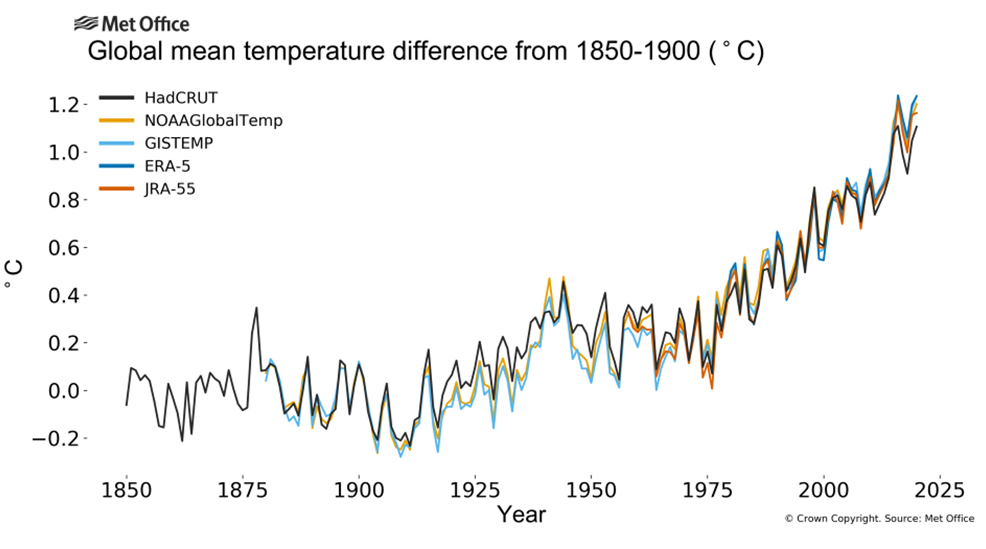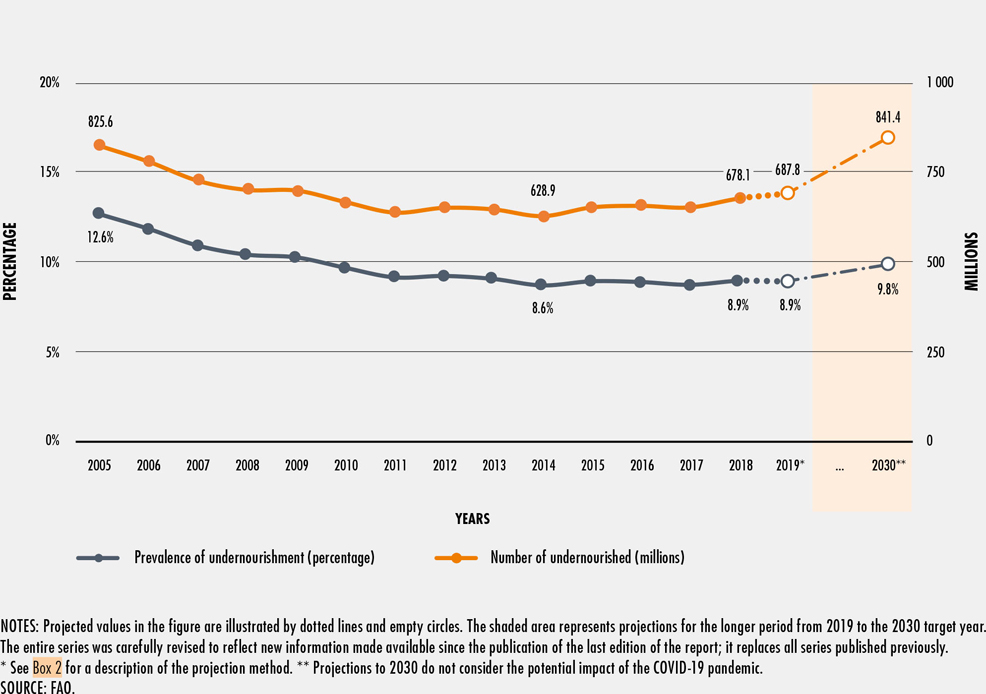
3rd December 2020 2020 in top three warmest years The World Meteorological Organization (WMO) reports that 2020 is likely among the three warmest years on record globally, at 1.2 °C (2.16 °F) above the pre-industrial level. The ten years from 2011-2020 are reported to be the warmest decade on record.
The World Meteorological Organization (WMO) has released its provisional report on the State of the Global Climate in 2020. This shows that – despite the lockdowns due to COVID-19 – atmospheric concentrations of greenhouse gases have continued to rise this year, committing the planet to further warming for many generations to come because of the long lifetime of CO2 in the atmosphere. 2020 is on track to be one of the three warmest years on record, with 2011-2020 being the warmest decade on record, and the warmest six years all occurring since 2015, according to the WMO. Ocean heat is at record levels. More than 80% of the global ocean experienced a marine heatwave at some time in 2020, with widespread repercussions for ecosystems already suffering from more acidic waters due to carbon dioxide (CO2) absorption. High-impact events – including extreme heat, wildfires and floods, as well as the record-breaking Atlantic hurricane season – affected millions of people, compounding threats to human health and security and economic stability posed by COVID-19. In the USA, the largest fires ever recorded occurred in late summer and autumn. Widespread drought and extreme heat contributed to the fires, and July to September were the hottest and driest on record for the southwest. Death Valley in California reached 54.4 °C, currently pending validation as the highest recorded air temperature on Earth.
"The average global temperature in 2020 is set to be about 1.2 °C above the pre-industrial level," said Professor Petteri Taalas, WMO Secretary-General. "There is at least a one in five chance of it temporarily exceeding 1.5 °C by 2024. This year is the fifth anniversary of the Paris Agreement. We welcome all the recent commitments by governments to reduce greenhouse gas emissions, because we are currently not on track and more efforts are needed. "Record warm years have usually coincided with a strong El Niño event, as was the case in 2016. We are now experiencing a La Niña, which has a cooling effect on global temperatures, but has not been sufficient to put a brake on this year's heat. Despite the current La Niña conditions, this year has already shown near-record heat comparable to the previous record of 2016," said Prof. Taalas. "2020 has, unfortunately, been yet another extraordinary year for our climate," he continued. "We saw new extreme temperatures on land, sea and especially in the Arctic. Wildfires consumed vast areas in Australia, Siberia, the US West Coast and South America, sending plumes of smoke circumnavigating the globe. We saw a record number of hurricanes in the Atlantic, including unprecedented back-to-back category 4 hurricanes in Central America in November. Flooding in parts of Africa and South East Asia led to massive population displacement and undermined food security for millions."
After decades of decline, the recent increase in food insecurity since 2014 is driven by conflicts and economic slowdown, with climate variability and extreme weather events playing a role, according to the WMO. Nearly 690 million people, or 9% of the world's population, suffered from undernourishment in 2019, according to the latest data. That figure may rise to 840 million people by 2030, if trends continue. The provisional State of the Global Climate report is based on early temperature data from January to October. The WMO assessment is based on five global temperature datasets (as shown in the graph earlier). All five of those datasets currently place 2020 as the 2nd warmest for the year to date – below 2016 and above 2019. The difference between the warmest three years is small, however, and exact rankings for each data set could change once data for the entire year are available. The final report will be published in March 2021. Researchers say that production of coal, oil and gas must fall by 6% every year until 2030 in order to keep global warming under the 1.5 °C target agreed in the Paris climate accord. However, nations are planning production increases of 2% a year, and G20 countries are giving 50% more COVID-19 recovery funding to fossil fuels than to clean energy. "To put it simply, the state of the planet is broken," said U.N. Secretary-General António Guterres at Columbia University on Wednesday. "Humanity is waging war on nature. This is suicidal," he said. "Nature always strikes back, and it is doing so with growing force and fury."
--- Follow us: Twitter | Facebook | Instagram | YouTube
Comments »
If you enjoyed this article, please consider sharing it:
|









